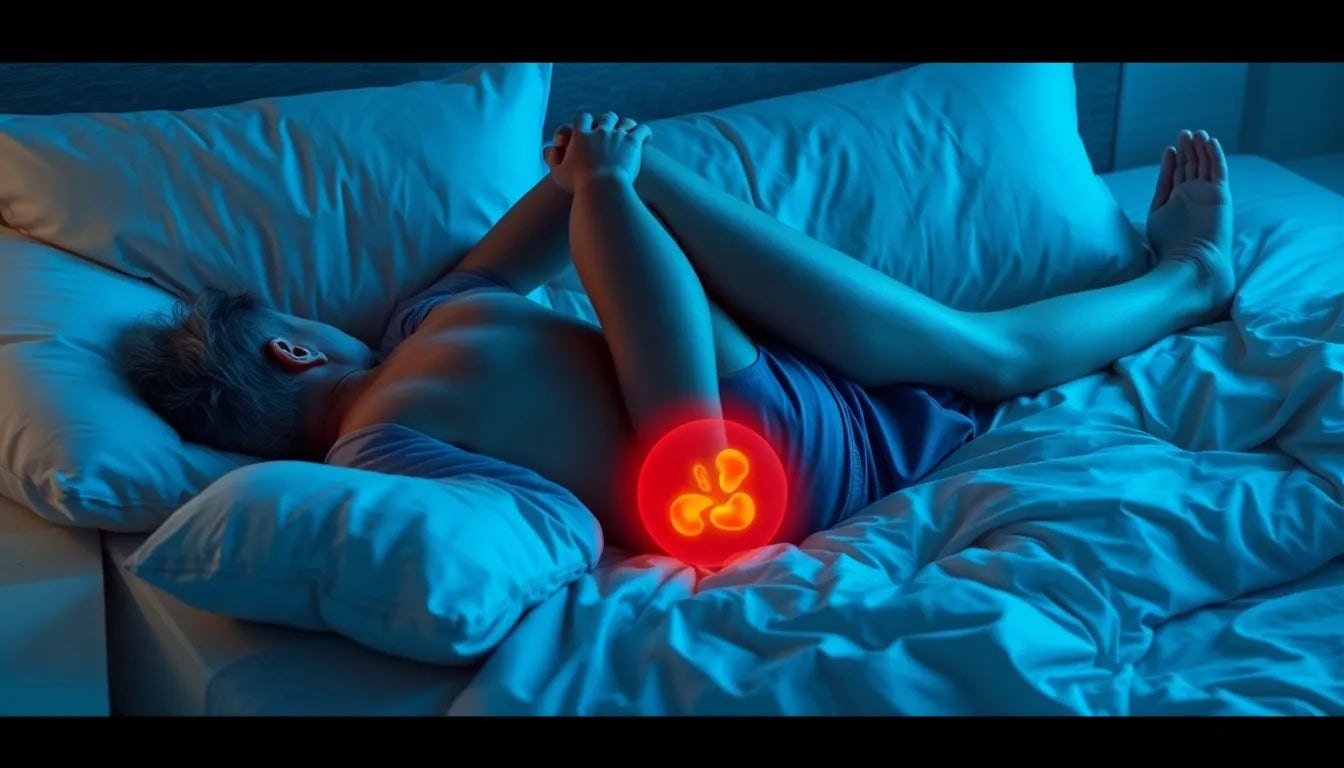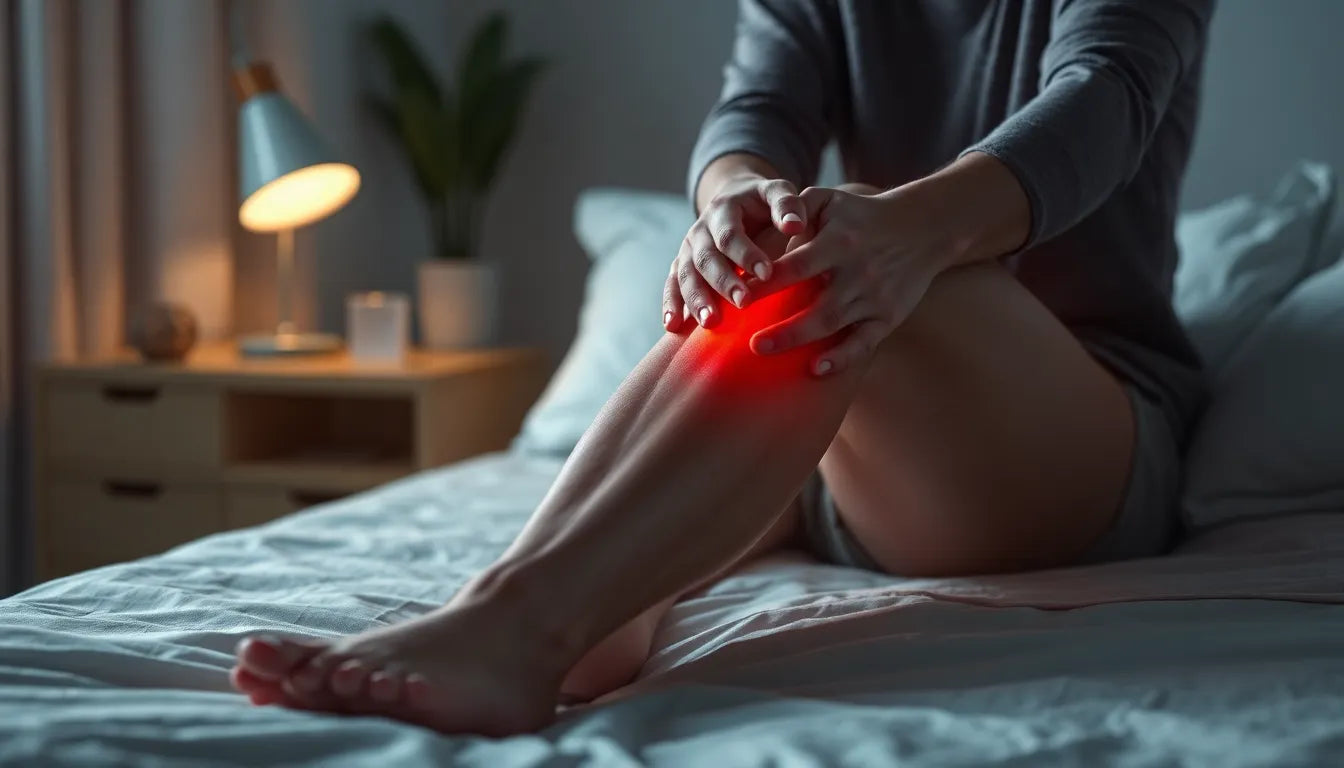Experiencing pain in the hip and lower back, known as smerter i hoften og lænden, is a common issue that affects many individuals, significantly impacting daily life and overall well-being. These discomforts can restrict mobility, making even the simplest tasks a challenge. Whether it's bending down to tie your shoes or standing up from a seated position, hip and lower back pain can turn routine activities into strenuous tasks, thereby diminishing one's quality of life.
understanding the prevalence of hip and lower back pain
For many, hip and lower back pain arises during everyday activities such as prolonged sitting, standing, or engaging in physical exercise. Picture yourself sitting at your desk for hours or standing in line at the supermarket; these are scenarios where discomfort might manifest. The root causes of these pains can vary, and understanding them is crucial for finding effective relief. Common culprits include osteoarthritis, muscle overuse, and poor posture, all of which contribute to the discomfort experienced in these areas.
the importance of timely intervention
Addressing hip and lower back pain promptly is essential to prevent the development of chronic issues. Ignoring these pains can lead to long-term complications that might require more intensive treatment down the line. By taking steps to understand and address the underlying causes, individuals can regain their freedom of movement and reduce pain. This proactive approach not only alleviates current discomfort but also helps maintain a healthier, more active lifestyle. Through informed choices and treatments, it’s possible to minimize the impact of these pains and improve overall well-being.
In conclusion, recognizing the prevalence and impact of hip and lower back pain is the first step toward finding relief. By understanding the common scenarios and root causes, individuals can take informed actions to address these issues. The benefits of addressing these pains are substantial, offering the promise of enhanced mobility and a better quality of life. As we explore further, it’s clear that timely intervention and proactive management are key to overcoming the challenges posed by hip and lower back pain.
typical causes of hip and lower back pain
Understanding the underlying causes of hip and lower back pain is crucial for effective management. One of the most common causes is osteoarthritis, or slidgigt, which involves the degeneration of joint cartilage. This condition can lead to stiffness and pain, especially during weight-bearing activities such as walking or standing for extended periods. As the cartilage wears down, the bones may rub against each other, causing significant discomfort and limiting mobility.
Another frequent cause is muscle or tendon overuse. Repetitive movements or overexertion can strain the muscles and tendons around the hip and lower back, leading to inflammation and pain. This is often seen in individuals who engage in activities that involve frequent bending or lifting without adequate rest periods.
Spinal disorders, such as disc prolapse or diskusprolaps, can also contribute to pain in these areas. A herniated disc can press on nearby nerves, causing pain that may radiate from the back to the hip and down the leg. This type of pain is often sharp and may be accompanied by numbness or tingling sensations.
Poor posture and muscular imbalances are increasingly common due to modern sedentary lifestyles. Spending long hours sitting at a desk or using electronic devices can lead to slouching, which places additional stress on the spine and surrounding muscles. Over time, this can create imbalances that result in pain and discomfort in the hip and lower back.

Lumbar support belt
Adjustable belt for lower back pain—supports and relieves tension from herniated discs, sciatica and more.
symptom overview and differentiation
The symptoms of hip and lower back pain can vary widely, depending on the underlying cause. Localized pain is typically felt in specific areas such as the groin, outer hip, or lower back. This type of pain is often associated with joint issues like osteoarthritis and is usually aggravated by activities that involve weight-bearing or movement.
In contrast, radiating pain often indicates nerve involvement, such as that seen with a herniated disc. This pain can extend from the lower back down the leg and may be accompanied by sensations of tingling or numbness. Distinguishing between these types of pain is important for determining the appropriate treatment approach.
The severity of pain can range from mild, intermittent discomfort to severe, persistent pain that affects daily activities and sleep. For some, the pain may be a dull ache that becomes more pronounced with activity, while for others, it may be sharp and debilitating.
visual aid: differentiating symptoms
To help differentiate between hip-origin and back-origin symptoms, consider the following:
| Symptom Origin | Common Symptoms | Exacerbating Activities |
|---|---|---|
| Hip Joint | Localized pain in the groin or outer hip, stiffness | Walking, standing, weight-bearing activities |
| Lower Back | Radiating pain, numbness, tingling, weakness | Sitting for long periods, bending, lifting |
By understanding these distinctions, individuals can better identify the source of their discomfort and seek appropriate treatment. Whether the pain originates from the hip joint or the lower back, addressing the root cause is key to finding relief and regaining mobility.
treatment and relief approaches for hip and lower back pain
Finding effective relief for smerter i hoften og lænden involves a combination of therapies and lifestyle adjustments. Physiotherapy plays a crucial role in managing these pains by focusing on muscle strengthening and posture correction. Techniques such as electrical muscle stimulation (EMS) and ultrasound therapy are often employed to enhance recovery and alleviate discomfort.
Osteopathy and massage therapy offer holistic approaches to pain relief. Osteopathy aims to address imbalances in the body that may contribute to pain, while targeted massage can relieve muscle tension and improve circulation, particularly in areas like the piriformis muscle.
Incorporating daily exercise and movement into your routine is essential for maintaining joint health and muscle stability. Engaging in moderate activities can prevent stiffness and support the healing process. Specific exercises designed to protect joints and stabilize muscles are highly recommended, especially for those with conditions like osteoarthritis.
Chiropractic care and manual therapy are also beneficial for addressing joint blockages and muscular issues. These treatments can help restore proper alignment and function, reducing pain and improving mobility. Additionally, alternative modalities like electric stimulation can offer supplementary relief.
when to seek professional help
While self-care strategies can be effective, it's important to know when to seek professional assistance. If pain persists despite home remedies, disrupts sleep, or impairs daily function, consulting a healthcare professional is advisable. Symptoms such as numbness, weakness, or radiating pain may indicate nerve involvement, necessitating a thorough evaluation to determine the appropriate course of action.
frequently asked questions
hvorfor får man smerter i hoften og lænden?
Smerter i hoften og lænden can arise from various causes, including osteoarthritis, muscle overuse, poor posture, and spinal disorders. These factors can lead to joint degeneration, muscle strain, or nerve compression, resulting in pain and discomfort.
hvordan kan man lindre smerter hjemme?
Home remedies for alleviating pain include gentle stretching exercises, applying heat to relax muscles, and making ergonomic adjustments to your workspace or home environment. These measures can help reduce tension and promote healing.
hvornår bør man opsøge professionel hjælp?
Seek professional help if pain persists, disrupts your daily life, or includes severe symptoms like radiating pain, numbness, or weakness. These signs may indicate underlying conditions that require medical evaluation and treatment.
hvilke øvelser kan hjælpe med at lindre smerter?
Exercises such as hip bridges, pelvic tilts, and gentle yoga stretches can help relieve hip and lower back pain. These activities enhance flexibility, strengthen supportive muscles, and improve posture. Consider consulting a physiotherapist for a tailored exercise plan.
er der produkter, der kan hjælpe med at forbedre holdning og reducere smerter?
Ergonomic aids, such as posture-correcting braces and supportive seating, can assist in maintaining proper alignment and reducing pain. These products are designed to support the spine and hips, promoting a healthier posture and alleviating discomfort.

Women's Posture Shirt™ - Black
Patented Neuroband™ shirt activates muscles and can relieve pain, tension, and improve posture.
Kilder
- Min Osteopat. ”Smerter i lænden og hoften.”
- Aros Kiropraktor. ”Symptomer og behandlinger: Hoftesmerter.”
- Mølholm. ”Irriteret slimsæk på hoftens yderside.”
- Fysio Danmark. ”Ondt i hoften? Her er tre gode øvelser til dig med slidgigt.”
- Apopro. ”Ondt i hoften.”
- Gigtforeningen. ”Hvor har du ondt? Hofte.”


















